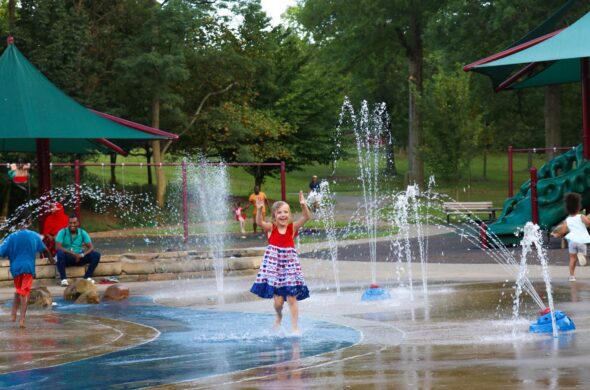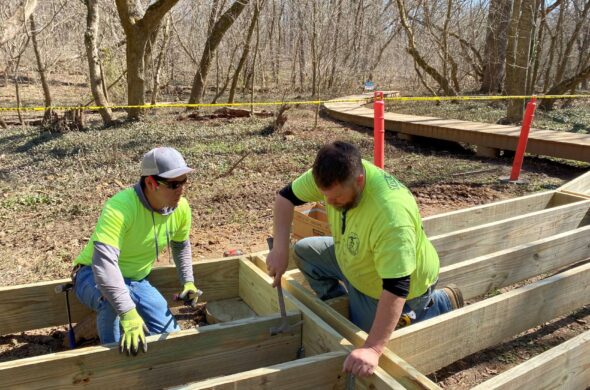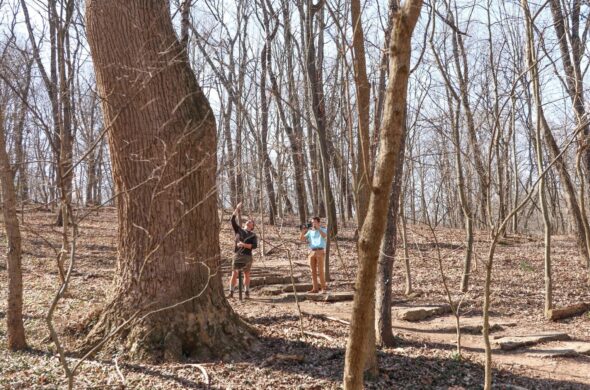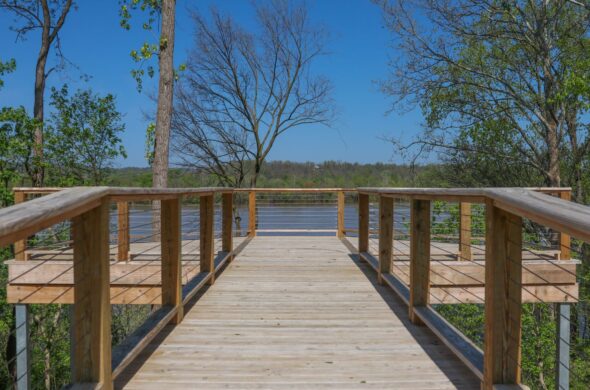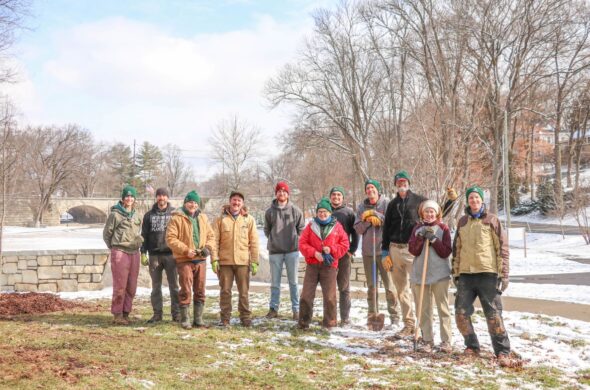As of August 31, feedback on the conceptual natural trail plan is closed for review and consideration.
Help us improve our natural trails in Cherokee, Seneca, and Iroquois Parks
Last fall, Olmsted Parks Conservancy and Louisville Parks and Recreation conducted a trail study to learn how we can better control soil erosion and improve our natural trails in Cherokee Park, Iroquois Park, and Seneca Park. We took your feedback from the Trail Usage survey and comments from the November public meetings to develop a conceptual plan that will serve as a 25-year guide for our natural trails – and we need your input to ensure we’re on the right track.
Click on the links to the interactive maps below or continue reading for more information on the goals of the project and rationale.


Why This Conceptual Plan?
This natural surface trail plan will provide a 25-year guide for three of Louisville’s Olmsted-designed parks: Cherokee, Seneca and Iroquois Parks. While these parks are well-loved community assets, their trail systems have a history of challenging issues including overwhelming use, rogue trails, conflict between trail users, and environmental degradation. Many of these issues were noted in the 1994 Master Plan for Louisville’s Olmsted Parks and Parkways and still persist today.
ThE natural surface trail plan will provide recommendations for enhancing the existing trail systems including identification of renovation projects, new trails, trail closures, and management recommendations.
The trail plan will consider a wide range of trail experiences and uses available to visitors, including:
- hiking
- managed mountain biking
- equestrian use
- access to streams and natural features
- environmental education
- and historical interpretation.
A sustainable park trail system will carry Olmsted’s historic vision forward and provide additional opportunities for residents and visitors to experience Louisville’s world-class park system.
Project Goals
- Environmental Sustainability: Develop a sustainable trail system that limits environmental impacts such erosion, the spread of invasive species, or other impacts to the landscapes of the parks
- Social Sustainability: Develop a connected network of trails that provides equitable access to users while balancing user needs and demand
- Economic Sustainability: Consider the long-term maintenance and financial needs of the trail system
- Historic Integrity: Follow Olmsted’s design philosophy in the development of the trail system

